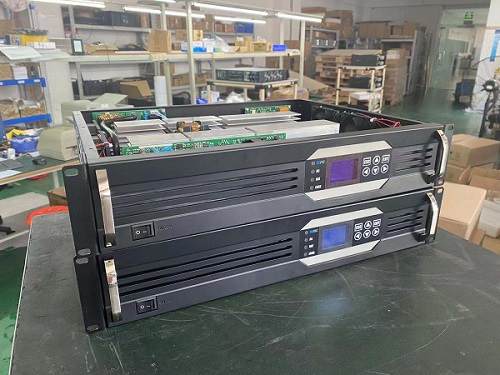Basic working principle of inverter communication power supply system
Communication inverter power supply is a device that provides AC and DC power supply for communication equipment. It plays an extremely important role in the communication network. It even compares the power supply equipment to the "heart" of the communication system. In recent years, due to the wide application of microelectronic technology and computer technology in communication equipment, a large amount of information will be lost even when the communication power supply is interrupted. Therefore, communication equipment has higher and higher requirements for the reliability of the power supply. At the same time, with the substantial increase in the capacity of communication equipment, communication tasks are also very important. Therefore, power outages will cause huge economic losses and extremely bad political influence. If the power supply system of the communication station fails, the power supply interruption will paralyze the entire communication station and affect the normal operation of the entire or part of the communication network. Therefore, we must pay attention to the safety and reliability of communication power supply.
1. The composition of power communication power supply system
The power supply is an important device to ensure smooth communication and an important part of the communication system. The communication power system is mainly composed of six parts: AC power distribution equipment, rectifiers, DC large-scale equipment, battery packs, monitoring systems, and lightning protection grounding systems.

2. Basic characteristics and requirements of power communication power supply
The power communication power supply system is to ensure the reliable operation of the power system, especially the -48V DC dedicated communication power supply set in the communication room to ensure the stable, reliable, continuous and independent operation of communication equipment. Power grid accident. The basic requirements of the communication power system are reliability and stability. As we all know, the failure of ordinary communication equipment will only have a partial impact. If the communication power supply fails, the communication system will be completely interrupted, which will have a wide range of impacts. Therefore, the AC part of the power system should be a reliable source of power. The main power supply should have two inputs, which can be switched automatically. The DC part should be connected in parallel with the battery pack. The power system should have lightning protection components and wave protection. Surge protection device to ensure the safe operation of the power system.
3. Power communication power management
3.1 Pay more attention to power supply equipment
Power supply equipment is different from the transmission and access equipment of my country's communication network. It is not communication equipment in essence, and it does not receive due attention in production, and there is no corresponding guarantee in terms of organization, personnel, capital, and management. However, it must be noted that, as the energy guarantee for the entire communication network, communication power has a global and global role. Although it is not the mainstream equipment of the communication network, it is indeed the most important and critical equipment in the communication network.
3.2 Strengthen the specialization of power management
The communication power supply requires independent management and power supply personnel in the management, construction and maintenance of the communication network at all levels.
3.3 Pay attention to the preliminary design and installation of the communication power supply system
The power supply system design should fully consider factors such as capacity, geographic location, spatial layout, future development, equipment quality, work survey design, operation mode selection, construction management, operation and maintenance management, etc. Among them, more attention should be paid to equipment selection, scheme design and project management.

